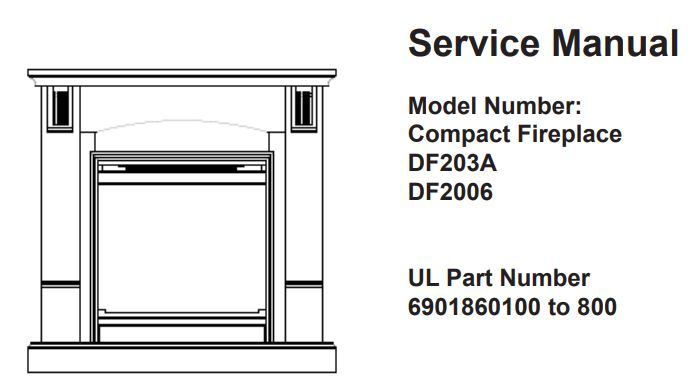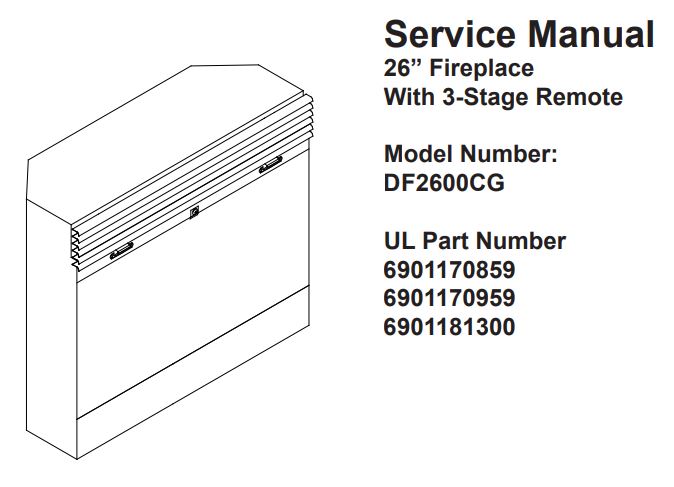Dimplex Manual For Electric Fireplace

Decoding the Dimplex Electric Fireplace: A Manual for HVAC Professionals and Enthusiasts
Electric fireplaces have become increasingly popular as a convenient and aesthetically pleasing alternative to traditional wood-burning or gas fireplaces. Among the leading manufacturers in this sector, Dimplex stands out for its innovative designs and efficient heating solutions. As an HVAC professional, understanding the intricacies of a Dimplex electric fireplace – specifically, interpreting its manual – is increasingly important, both for servicing existing units and advising clients on energy-efficient heating options.
Why HVAC Pros Need to Know Electric Fireplaces
While not directly within the traditional scope of HVAC, electric fireplaces share fundamental principles of heating and air movement. Understanding their operation allows HVAC technicians to:
- Diagnose and repair common issues: Many problems relate to electrical components, fan motors, or heating elements – all areas familiar to HVAC technicians.
- Advise customers on efficient heating solutions: Electric fireplaces can supplement central heating, potentially saving energy and reducing heating bills.
- Expand service offerings: Offering maintenance and repair for electric fireplaces can create a new revenue stream.
- Stay ahead of industry trends: The electrification of heating is a growing trend, and understanding electric fireplaces is a step towards future-proofing your career.
Navigating the Dimplex Manual: Key Sections and Their Importance
The Dimplex manual is your primary resource for understanding a specific model. While manuals vary, they typically include the following crucial sections:
1. Safety Information: Your First Stop
This section is paramount. It details critical safety precautions to prevent electrical shock, fire hazards, and other potential dangers. Pay close attention to warnings about:
- Proper grounding and electrical connections.
- Safe distances from flammable materials.
- Overloading circuits.
- Operating the fireplace near water.
Example: A common warning is "Do not operate the fireplace with a damaged cord or plug." Ignoring this can lead to serious electrical hazards.
2. Installation Instructions: Setting It Up Right
Proper installation is critical for safe and efficient operation. The manual outlines specific steps for:
- Mounting the fireplace (wall-mounted, recessed, freestanding).
- Connecting to the electrical supply.
- Ensuring proper ventilation and clearance.
Note: Even seemingly simple installations should adhere strictly to the manual's instructions. Incorrect wiring can damage the unit or create a fire hazard.
3. Operating Instructions: Maximizing Performance and Efficiency
This section explains how to use the fireplace's features, including:
- Powering the unit on and off.
- Adjusting the flame effect (brightness, speed).
- Setting the thermostat and heater.
- Using the remote control.
Understanding these instructions allows you to troubleshoot basic user errors and explain optimal operating procedures to customers.
4. Maintenance and Cleaning: Keeping It Running Smoothly
Regular maintenance is essential for extending the life of the fireplace. The manual provides guidance on:
- Cleaning the glass screen and outer surfaces.
- Replacing light bulbs or LED modules.
- Checking for loose connections or damaged components.
Important: Always disconnect the fireplace from the power supply before performing any maintenance. Consider offering annual maintenance services to your clients.
5. Troubleshooting: Diagnosing and Resolving Common Issues
This section provides a list of common problems and their potential solutions. Examples include:
- Fireplace not turning on.
- Heater not working.
- Flame effect not displaying correctly.
- Unusual noises.
By systematically working through the troubleshooting steps, you can often diagnose and resolve issues without needing to replace the entire unit.
6. Parts List and Warranty Information: Knowing Your Resources
The parts list identifies specific components, making it easier to order replacements. The warranty information outlines the coverage period and conditions for repairs or replacements.
Tip: Familiarize yourself with the warranty terms before attempting any repairs. Unauthorized repairs may void the warranty.
Electric Fireplace Technology: A Deeper Dive for HVAC Professionals
Beyond the manual, understanding the underlying technology of Dimplex electric fireplaces can enhance your diagnostic and repair skills.
Heating Elements: Resistance vs. Infrared
Most Dimplex electric fireplaces use either resistance heating elements or infrared heating. Resistance heating is more common and involves passing electricity through a coil, which heats up and radiates heat. Infrared heating uses infrared lamps to directly warm objects and people, offering potentially greater energy efficiency.
Flame Effect Technology: Creating the Illusion
The flame effect is typically created using a combination of mirrors, lights, and a rotating reflector. Some models use LED technology to produce more realistic and energy-efficient flames.
Thermostats and Controls: Maintaining Comfort
Electric fireplaces use thermostats to regulate the heater and maintain a desired room temperature. These can be simple mechanical thermostats or more sophisticated electronic controls with timers and programmable settings.
Career Paths and Opportunities in Electric Heating
The increasing popularity of electric heating solutions is creating new opportunities for HVAC professionals. Consider these career paths:
- HVAC Technician Specializing in Electric Heating: Focus on installing, maintaining, and repairing electric fireplaces, heat pumps, and other electric heating systems.
- Energy Auditor: Assess homes and businesses to identify opportunities for energy savings, including recommending and installing efficient electric heating solutions.
- HVAC Sales and Consulting: Advise customers on the best electric heating options for their needs, considering factors like energy efficiency, cost, and aesthetics.
According to the Bureau of Labor Statistics, the median annual wage for HVACR technicians was $51,390 in May 2021. The job outlook is projected to grow 5 percent from 2021 to 2031, about average for all occupations. Specializing in in-demand areas like electric heating can further enhance your earning potential. Salaries for specialized technicians can easily exceed $65,000 per year, depending on experience and location.
Certifications: Enhancing Your Credentials and Expertise
While specific certifications for electric fireplaces are rare, several HVAC certifications can enhance your credibility and demonstrate your expertise:
- NATE (North American Technician Excellence): NATE certification is a widely recognized standard of excellence in the HVAC industry.
- EPA Section 608 Technician Certification: Required for handling refrigerants, this certification is essential for technicians working with heat pumps, which are often used in conjunction with electric fireplaces.
- Electrical Certifications: Depending on local regulations, you may need electrical certifications to perform electrical work on electric fireplaces.
Real-World Example: From HVAC Apprentice to Electric Heating Specialist
Consider the career path of Sarah, a recent HVAC graduate. After completing her apprenticeship, she noticed the growing demand for electric fireplace installations and repairs in her area. She pursued additional training in electrical systems and energy efficiency, and obtained her NATE certification. Today, Sarah runs her own successful business specializing in electric heating solutions, serving both residential and commercial clients. Her ability to interpret Dimplex manuals and diagnose complex issues has been instrumental to her success.
Embracing the Future of Heating
The electric fireplace market is expected to continue growing in the coming years, driven by factors like increasing energy costs, environmental concerns, and advancements in technology. By understanding the principles of electric fireplace operation, mastering the interpretation of manuals like those from Dimplex, and pursuing relevant certifications, HVAC professionals can position themselves for success in this evolving industry.
Whether you're an HVAC student, an experienced technician, or an employer seeking skilled workers, the knowledge and skills related to electric heating are becoming increasingly valuable. Embrace the future of heating and unlock new opportunities for professional growth and success.










